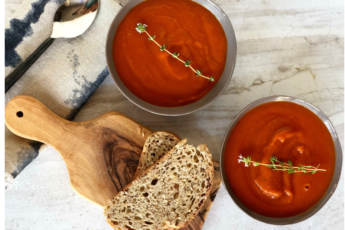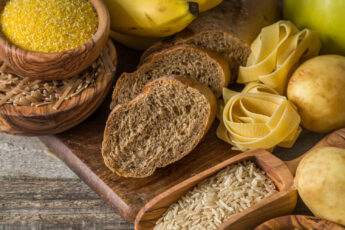I love chocolate, particularly dark chocolate. I make no apologies, and the more I learn about chocolate and the cocoa bean, the more I realize no apologies are needed. It’s no joke, cocoa has health benefits. Indeed, if I ruled the world, dark chocolate would be a deductible medical expense.
Perhaps the science isn’t quite sufficient to justify chocolate as a deductible medical expense, but it ain’t junk food either. There’s enough info on Theobroma cacao to warrant treating it with respect.
What Makes Chocolate “Healthy-ish”?
Chocolate is loaded with antioxidants. It contains flavonoids, a group of phytochemicals with anti-inflammatory powers and benefits for the immune system. There are several subgroups of flavonoids, such as anthocyanidins that give foods like Concord grapes and red cabbage their purple color, and flavones, found in celery and bell peppers. It’s the flavanols however, that give chocolate (and other foods like tea and blueberries) it’s healthful properties. 
So, What’s Chocolate’s Impact On Health?
Improved blood flow: This review of the research studying the combination of eating cocoa flavanols and doing aerobic exercise improved cardiovascular risk factors and vascular function (read: improved blood flow). Cocoa helps reduce blood pressure by relaxing the walls of the blood vessels, improving blood flow, not only to the heart, but also to the gray matter of the brain. This doesn’t mean eating a candy bar will make you a genius, but there may be bennies from eating some dark chocolate regularly.
Cholesterol benefits: Cocoa consumption seems to raise the HDL cholesterol (the good form) and reduce the “LDL cholesterol” (the bad one you want less of). It works best when your total cholesterol levels are high.
Reduces “oxidative stress”: In a just-published systematic review of 48 studies on cocoa, the researchers found that cocoa consumption “plays an important role in the human metabolic pathway through reducing oxidative stress.” Oh, bring it on.
What’s oxidative stress? It’s caused by “free radicals”. Free radicals in your body can “nick” or damage the cells in arterial walls, making it easy for plaques to adhere and build up, clogging arteries. Cocoa consumption seems to help prevent free radicals from forming. Ever taste rancid oil or nuts? You’re tasting “oxidized” food damaged by free radicals.

Adapted from Tuenter, et al.
In the Mood
In this review of studies that looked at chocolate, mood, and cognition, the authors developed a “mood pyramid”. They placed more general mood benefits from the flavanols at the bottom, since these are benefits associated with flavanols in other foods as well. Secondary mood benefits appear to come from the caffeine-theobromine combination in chocolate.
More specific is a possible dopamine effect from a substance in chocolate called salsolinol. This is emerging research, but the hypothesis is that salsolinol may play a role in the impact of chocolate on mood. Just how much chocolate you’d need to eat is still unclear.
The Fine Print
Yes, there is some. Some of the research found benefits from low intakes of chocolate, as little as 7.5 grams. Other studies used significantly more however, up to 100 grams a day and produced good results. (How do I sign up?)
These cocoa flavanols are NOT present in all chocolate foods. Read labels: if it says, “cocoa processed with alkali” you can pretty much forget getting any flavanols. This form of cocoa is also known as “Dutch-processed”. The process makes cocoa appear darker (see photo) and taste a tad less acidic but it blows the antioxidant content to smithereens. Some chefs and bakers prefer this type of cocoa for recipes. I do not. Give me the lighter powder on the right. I like my flavanols, thanks.
Chocolate isn’t calorie-free. Solid bars have about 150-170 calories per ounce. I keep it to a max of 2 ounces a day, but an ounce of good chocolate, at 170 calories, makes for a rich snack or even a lower-calorie dessert. Fair enough. Cocoa powder however, is low in calories and the most concentrated source of cocoa flavanols, so use it to make your own hot chocolate. I sweeten with stevia or a no-cal sweetener to minimize added sugar calories, and often add some cinnamon or other spice (smoked paprika is a favorite of mine).
Get a high — in percent cocoa. The most benefits are seen with chocolate that has at least 70% cocoa solids. Not a problem for me, but it takes getting used to. Go gradually!






